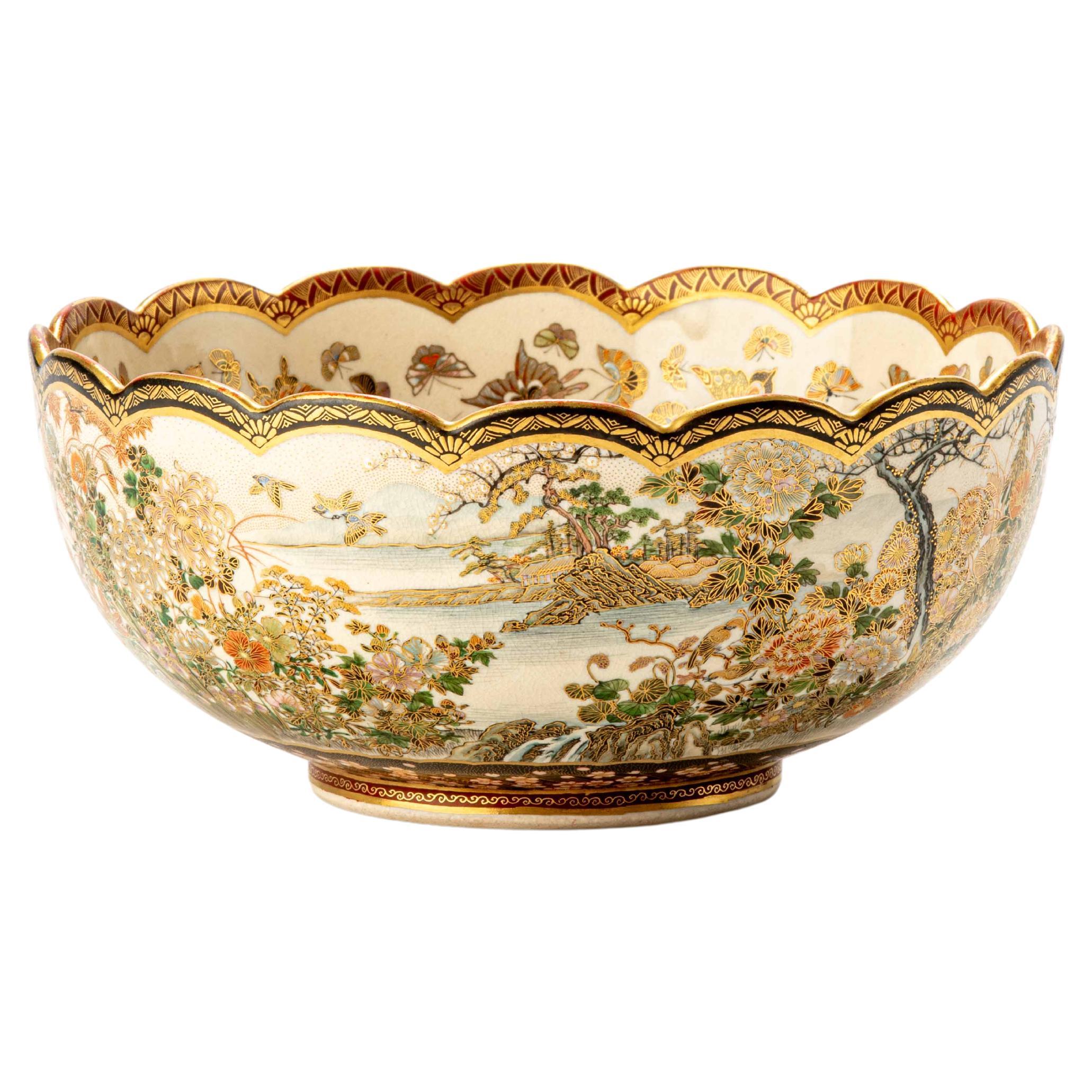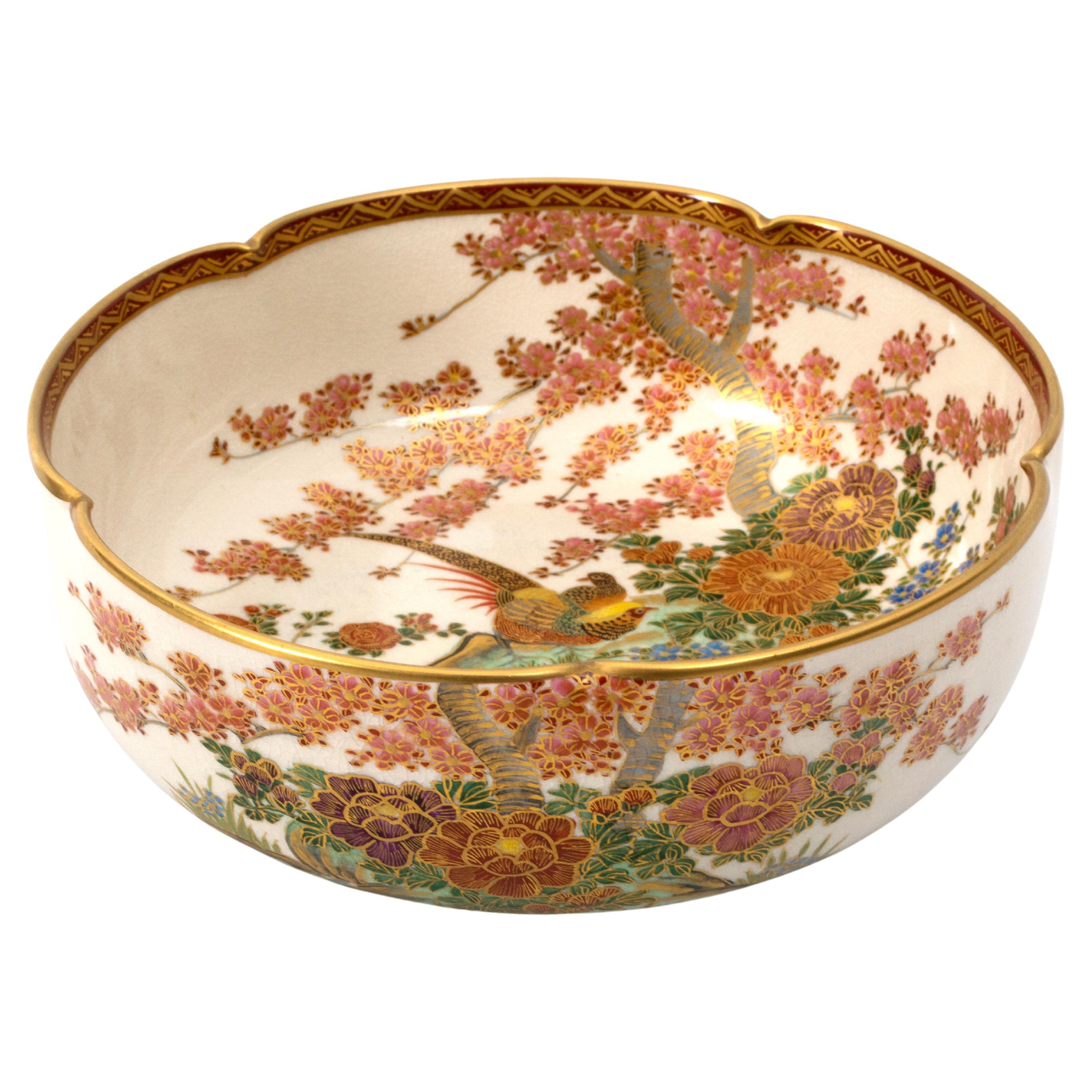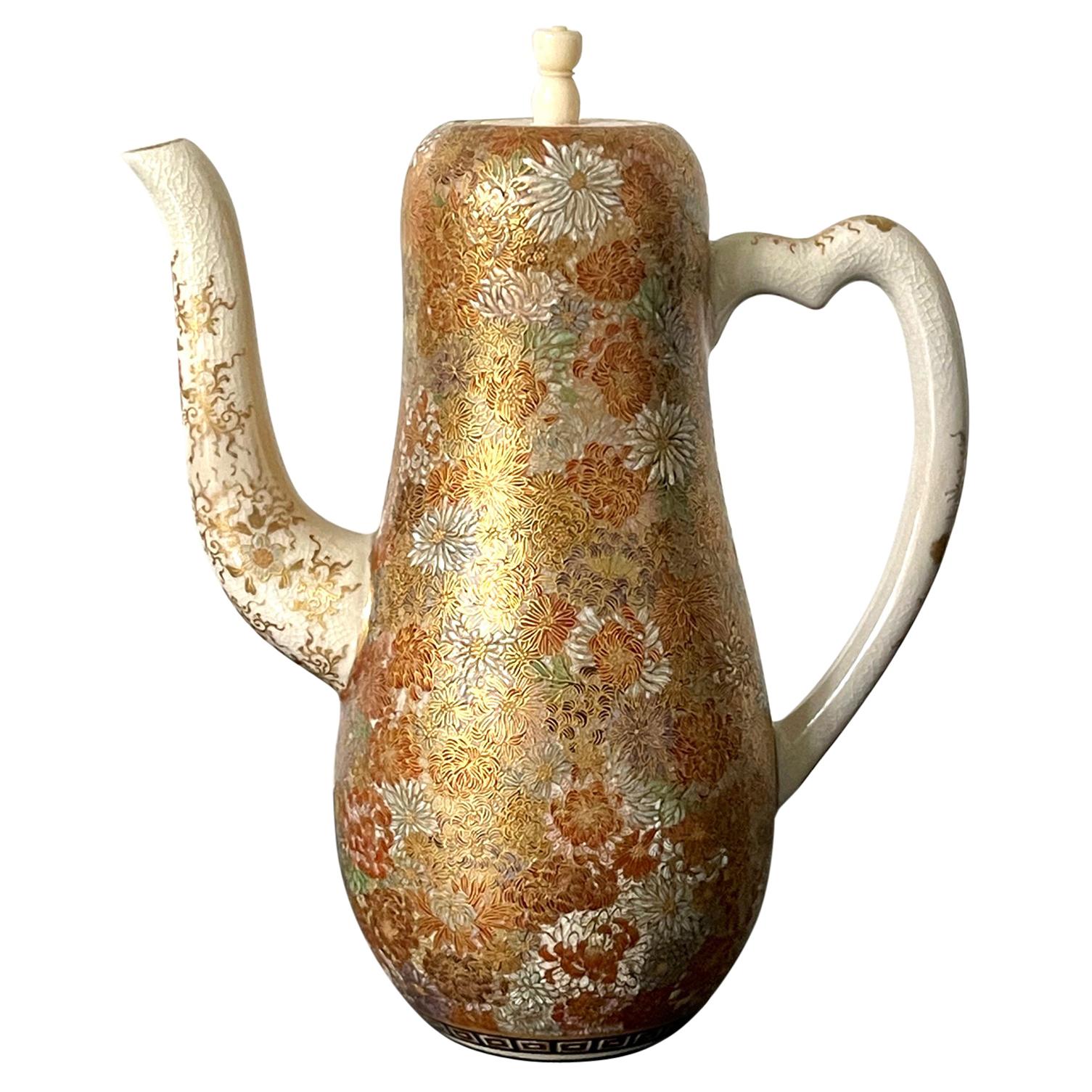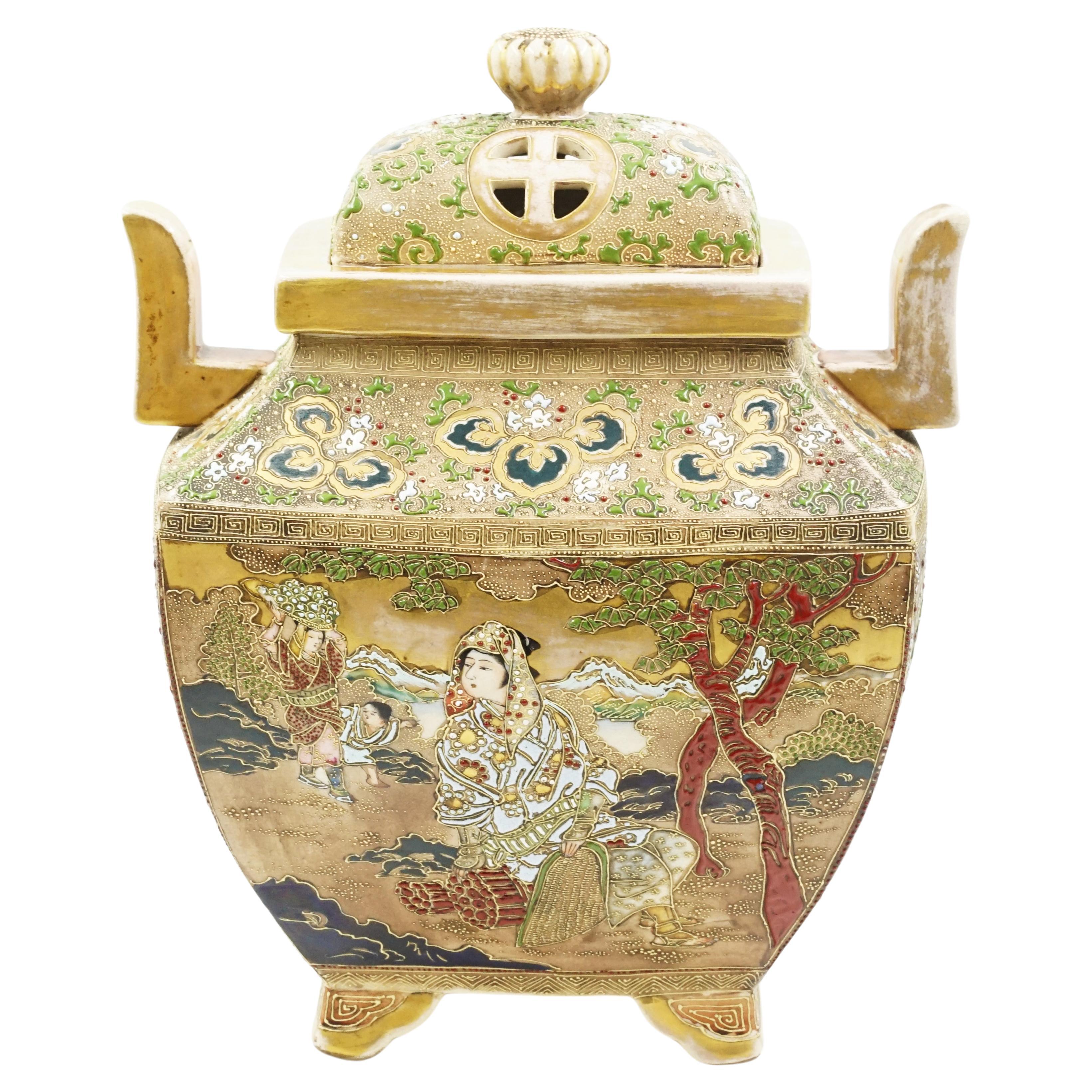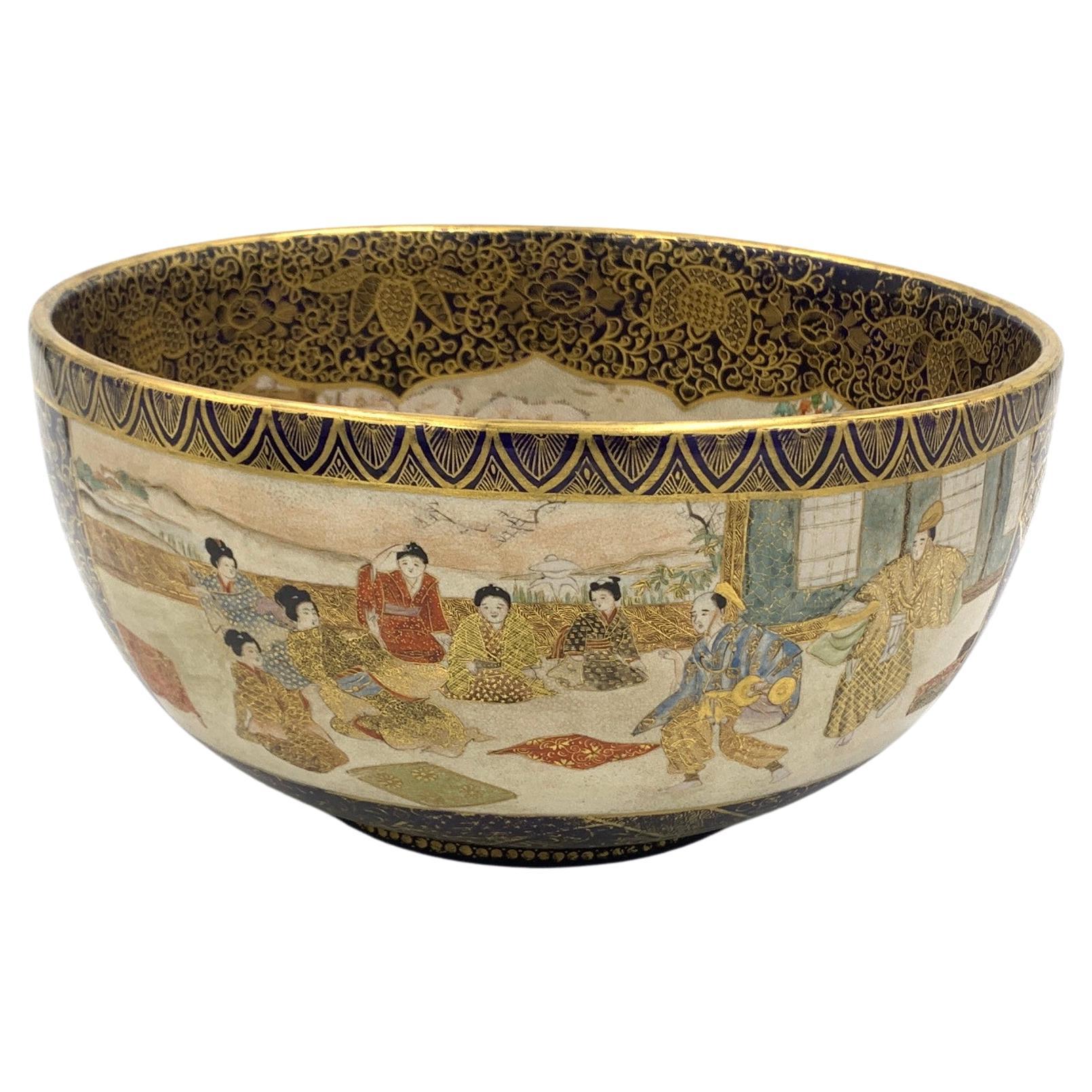Items Similar to A Japanese Satsuma ceramic lobed bowl
Want more images or videos?
Request additional images or videos from the seller
1 of 8
A Japanese Satsuma ceramic lobed bowl
About the Item
Satsuma ceramic lobed bowl with curved corners and embellished with a refined scene of daily life along a watercourse on the outside. The interior is adorned with graceful butterflies, creating a harmonious blend of nature and craftsmanship.
This bowl is signed Juzan under the base.
Origin: Japan
Period: Meiji end of 19th century.
Dimensions: 5.5 x 8 cm.
State of conservation: Very good
- Dimensions:Height: 2.17 in (5.5 cm)Diameter: 3.15 in (8 cm)
- Style:Japonisme (In the Style Of)
- Materials and Techniques:
- Place of Origin:
- Period:
- Date of Manufacture:Meiji period
- Condition:
- Seller Location:Milano, IT
- Reference Number:1stDibs: LU9162238045762
About the Seller
No Reviews Yet
Vetted Seller
These experienced sellers undergo a comprehensive evaluation by our team of in-house experts.
1stDibs seller since 2023
- ShippingRetrieving quote...Ships From: Milano, Italy
- Return PolicyA return for this item may be initiated within 14 days of delivery.
More From This SellerView All
- Satsuma ceramic lobed bowl, signed Juzan under the baseLocated in Milano, ITSatsuma ceramic lobed bowl adorned with raised enamels and fine gold details, depicting a vibrant landscape within. Characters and traditional Japanese home...Category
Antique Late 19th Century Japonisme Ceramics
MaterialsCeramic
- A Japanese Satsuma ceramic bowl adorned with relief glazes and gold detailsLocated in Milano, ITSatsuma ceramic bowl adorned with relief glazes and gold details depicting a motif of Manchurian Cranes in flight, symbols of longevity and happiness in Japanese culture. Inside, the bowl features a dense motif of a thousand butterflies...Category
Antique Late 19th Century Japanese Japonisme Ceramics
MaterialsCeramic
- A Satsuma bowl decorated with a striking landscapeLocated in Milano, ITSatsuma bowl decorated with a striking landscape that evokes the beauty and serenity of the Japanese hills, with a gently flowing river surrounded by trees and mountains. The bowl i...Category
Antique 19th Century Japanese Japonisme Ceramics
MaterialsCeramic
- Satsuma ceramic plate adorned with polychrome and gold decorationsLocated in Milano, ITSatsuma ceramic plate adorned with polychrome and gold decorations within numerous reserves of unique shape and size, depicting scenes of Japanese daily life. The plate is signed un...Category
Antique Late 19th Century Japanese Japonisme Ceramics
MaterialsCeramic
- A Satsuma vase decorated with a garden of chrysanthemumsLocated in Milano, ITSatsuma vase, with slender neck and terminal part adorned in pure gold decorated with a garden of chrysanthemums, made with enamel and gold in relief. Different varieties of chrysan...Category
Antique Late 19th Century Japanese Japonisme Ceramics
MaterialsCeramic
- A Japanese refined silver Junjin bowlLocated in Milano, ITRefined silver bowl with embossed irises cast and chiseled inside on a hand-hammered ground on the bulbous body, raised on an oval foot. Signature engraved under the base Watanabe z...Category
Antique Late 19th Century Japanese Japonisme Metalwork
MaterialsSilver
You May Also Like
- Antique Japanese Lobed Satsuma Bowl Meiji Period C.1900Located in London, GBAntique Japanese Lobed Satsuma Bowl Meiji Period C.1900 A Kobe Japan Satsuma bowl, of lobed pedestal form hand painted inside and out. A hand-painted natu...Category
Early 20th Century Japanese Ceramics
MaterialsEarthenware
- Japanese Satsuma Ceramic Ewer Yabu MeizanBy Yabu MeizanLocated in Atlanta, GAA Satsuma ware miniature ewer from the studio of Yabu Meizan (birth name Yabu Masashichi; 1853-1934), who was one of the most celebrated and collectible Satsuma artists from the Meij...Category
Early 20th Century Japanese Japonisme Ceramics
MaterialsCeramic
- Koro Satsuma Japanese ceramicLocated in Buenos Aires, ArgentinaKoro Satsuma Japanese ceramic Japanese glazed ceramic in various colors Meiji Style Circa 1940 Origin Japan It has traditional images painted on its front and back. The purpose of th...Category
Vintage 1940s Japanese Meiji Ceramics
MaterialsEnamel
- Japanese Satsuma Bowl, Meiji PeriodLocated in London, GBSigned, Meiji period (late 19th century), Decorated in various coloured enamels and lavish gilt on a blue ground with panels containing samurai, ladies in kimono, the interior with a...Category
Antique Late 19th Century Japanese Ceramics
MaterialsPorcelain
- Japanese Meiji Period Satsuma Bowl KinkozanBy KinkozanLocated in Newark, EnglandFrom our Japanese collection, we are delighted to offer this Japanese Meiji period Satsuma Bowl by Kinkozan. The earthenware bowl with pinched rim extensively decorated on both the exterior and interior. The bowl with a cobalt blue base glaze decorated to the borders with gilt shippo-tsunagi (linked-cash) with scattered medallion roundells. Around the exterior two elongated scenes are featured, one with boys playing games in a courtyard with the other featuring seated scholars in full dress both with raised enamel decoration. The interior features a central scene with Samurai warriors in training fully armoured with swords in a courtyard with landscapes scenes to the background. The central scene bordered by further stylised shippo-tsunagi type decoration with a greek key rim border. The bowl signed to the base Kinkozan dating to the Meiji Period (1868-1912) circa 1900. Shippo-Tsunagi (linked-cash) or seven treasures, is a traditional Japanese geometric pattern that combines four ellipses in a circle. These ellipses repeat outward to then create more circles, symbolising eternal peace and happiness. Kinkozan the Kinkozan family have been associated with pottery dating back to 1645. They went on to become the largest producer of Satsuma ware by one individual company, from the end of the 19th century until 1927 after which the factory closed. By the 1850s Kobayashi Sobei (1824-84), Kinkozan Sobei...Category
Antique Early 1900s Japanese Meiji Ceramics
MaterialsCeramic, Earthenware, Pottery, Faux Leather
- Large Japanese Satsuma Ceramic Vase KinkozanBy KinkozanLocated in Atlanta, GAA large Japanese ceramic vase from the end of Meiji period circa 1890-1910s by Kinkozan (1645-1927). One of the largest studio manufacturers of the export ceramics at the time based in Kyoto. In the typical style of satsuma made at the turn of 20th century, the vase is elaborately decorated with a rather unusual kinran-de (gold paint) and green enamel highlight on a mottled brown background. The painterly decoration depicts a large seasonal floral arrangement in a circular fashion. Besides the obviously superb craftsmanship, what sets this particular vase apart from many lower quality and mass-produced pieces is its tone-on-tone color pallet that is visually somber and the small and sensitive details that heralds the change of the seasons. When the viewer goes beyond the first casual glimpse of the blossom and foliage, one would notice that on the edges of certain leaves as well as along the stalks, there accumulates a very thin layer of the white dust that represents the frost. The flower in bloom are chrysanthemums. Despite of being splendid, they are the messengers of the autumn. The large lotus leaf was subtly rendered in a bended and slightly withered manner, just past its prime. Although the lotus is still in bloom, the prominent seed pod indicates it may be the last for the season. The sentimental capture of the change of the seasons is not unusual in Japanese art. This vase poetically represents such a subtle transition from summer to fall, perhaps depicting the very first frost. The neck of the vase is also slightly unusual with two rolled rings...Category
Early 20th Century Japanese Meiji Ceramics
MaterialsCeramic
Recently Viewed
View AllMore Ways To Browse
Goro Ceramics
Sang De Boeuf Jar
Blue And White Dragon Bowl
Coalport Hong Kong
Winter Scene Chinese Vase
Chinese Water Coupe
Opium Smoke
Imari Landscape
Ceramic Stone Wear Cups And Saucers
Higa Pottery
Hoya Vase
Ko Kutani Chargers
Kumagawa Antique
Kutani Jardiniere
Kutani Temple Jar
Majapahit Pig
Ming Plate Longquan
Nagaoka Masami
